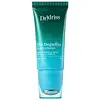What's inside
What's inside
 Key Ingredients
Key Ingredients

 Benefits
Benefits

 Ingredients Side-by-side
Ingredients Side-by-side

Water
Skin ConditioningPropanediol
SolventNiacinamide
SmoothingBetaine
HumectantDimethyl Isosorbide
SolventTranexamic Acid
AstringentAcetyl Glucosamine
Skin ConditioningAlpha-Arbutin
AntioxidantUndecylenoyl Phenylalanine
Skin ConditioningGlycyrrhiza Glabra Root Extract
BleachingDipotassium Glycyrrhizate
HumectantTetrahydrodiferuloylmethane
AntioxidantHexylresorcinol
AntimicrobialDimethylmethoxy Chromanol
AntioxidantXanthan Gum
EmulsifyingLecithin
EmollientSclerotium Gum
Emulsion StabilisingPullulan
Disodium EDTA
Sodium Hydroxide
BufferingChlorphenesin
AntimicrobialCaprylyl Glycol
EmollientPhenoxyethanol
PreservativeEthylhexylglycerin
Skin ConditioningWater, Propanediol, Niacinamide, Betaine, Dimethyl Isosorbide, Tranexamic Acid, Acetyl Glucosamine, Alpha-Arbutin, Undecylenoyl Phenylalanine, Glycyrrhiza Glabra Root Extract, Dipotassium Glycyrrhizate, Tetrahydrodiferuloylmethane, Hexylresorcinol, Dimethylmethoxy Chromanol, Xanthan Gum, Lecithin, Sclerotium Gum, Pullulan, Disodium EDTA, Sodium Hydroxide, Chlorphenesin, Caprylyl Glycol, Phenoxyethanol, Ethylhexylglycerin
Water
Skin ConditioningNiacinamide
SmoothingGlycerin
HumectantPentylene Glycol
Skin ConditioningButylene Glycol
HumectantPropanediol
SolventHydroxyethyl Acrylate/Sodium Acryloyldimethyl Taurate Copolymer
Emulsion StabilisingSqualane
EmollientArnica Montana Flower Extract
MaskingCentella Asiatica Leaf Extract
Skin ConditioningFraxinus Excelsior Bark Extract
Skin ConditioningAgastache Mexicana Flower/Leaf/Stem Extract
Skin ConditioningAvena Sativa Kernel Extract
AbrasiveCamellia Sinensis Leaf Extract
AntimicrobialHydroxyphenyl Propamidobenzoic Acid
Skin ConditioningMaltodextrin
AbsorbentDimethicone Crosspolymer
Emulsion StabilisingSilanetriol
Sorbitan Isostearate
EmulsifyingPolysorbate 60
EmulsifyingCaprylyl Glycol
EmollientHexylene Glycol
EmulsifyingEthylhexylglycerin
Skin ConditioningPhenoxyethanol
PreservativeWater, Niacinamide, Glycerin, Pentylene Glycol, Butylene Glycol, Propanediol, Hydroxyethyl Acrylate/Sodium Acryloyldimethyl Taurate Copolymer, Squalane, Arnica Montana Flower Extract, Centella Asiatica Leaf Extract, Fraxinus Excelsior Bark Extract, Agastache Mexicana Flower/Leaf/Stem Extract, Avena Sativa Kernel Extract, Camellia Sinensis Leaf Extract, Hydroxyphenyl Propamidobenzoic Acid, Maltodextrin, Dimethicone Crosspolymer, Silanetriol, Sorbitan Isostearate, Polysorbate 60, Caprylyl Glycol, Hexylene Glycol, Ethylhexylglycerin, Phenoxyethanol
 Reviews
Reviews

Ingredients Explained
These ingredients are found in both products.
Ingredients higher up in an ingredient list are typically present in a larger amount.
Caprylyl Glycol is a humectant and emollient, meaning it attracts and preserves moisture.
It is a common ingredient in many products, especially those designed to hydrate skin. The primary benefits are retaining moisture, skin softening, and promoting a healthy skin barrier.
Though Caprylyl Glycol is an alcohol derived from fatty acids, it is not the kind that can dry out skin.
This ingredient is also used as a preservative to extend the life of products. It has slight antimicrobial properties.
Learn more about Caprylyl GlycolEthylhexylglycerin (we can't pronounce this either) is commonly used as a preservative and skin softener. It is derived from glyceryl.
You might see Ethylhexylglycerin often paired with other preservatives such as phenoxyethanol. Ethylhexylglycerin has been found to increase the effectiveness of these other preservatives.
Niacinamide is a multitasking form of vitamin B3 that strengthens the skin barrier, reduces pores and dark spots, regulates oil, and improves signs of aging.
And the best part? It's gentle and well-tolerated by most skin types, including sensitive and reactive skin.
You might have heard of "niacin flush", or the reddening of skin that causes itchiness. Niacinamide has not been found to cause this.
In very rare cases, some individuals may not be able to tolerate niacinamide at all or experience an allergic reaction to it.
If you are experiencing flaking, irritation, and dryness with this ingredient, be sure to double check all your products as this ingredient can be found in all categories of skincare.
When incorporating niacinamide into your routine, look out for concentration amounts. Typically, 5% niacinamide provides benefits such as fading dark spots. However, if you have sensitive skin, it is better to begin with a smaller concentration.
When you apply niacinamide to your skin, your body converts it into nicotinamide adenine dinucleotide (NAD). NAD is an essential coenzyme that is already found in your cells as "fuel" and powers countless biological processes.
In your skin, NAD helps repair cell damage, produce new healthy cells, support collagen production, strengthen the skin barrier, and fight environmental stressors (like UV and pollution).
Our natural NAD levels start to decline with age, leading to slower skin repair, visible aging, and a weaker skin barrier. By providing your skin niacinamide, you're recharging your skin's NAD levels. This leads to stronger, healthier, and younger looking skin.
Another name for vitamin B3 is nicotinamide. This vitamin is water-soluble and our bodies don't store it. We obtain Vitamin B3 from either food or skincare. Meat, fish, wheat, yeast, and leafy greens contain vitamin B3.
The type of niacinamide used in skincare is synthetically created.
Learn more about NiacinamidePhenoxyethanol is a preservative that has germicide, antimicrobial, and aromatic properties. Studies show that phenoxyethanol can prevent microbial growth. By itself, it has a scent that is similar to that of a rose.
It's often used in formulations along with Caprylyl Glycol to preserve the shelf life of products.
Propanediol is an all-star ingredient. It softens, hydrates, and smooths the skin.
It’s often used to:
Propanediol is not likely to cause sensitivity and considered safe to use. It is derived from corn or petroleum with a clear color and no scent.
Learn more about PropanediolWater. It's the most common cosmetic ingredient of all. You'll usually see it at the top of ingredient lists, meaning that it makes up the largest part of the product.
So why is it so popular? Water most often acts as a solvent - this means that it helps dissolve other ingredients into the formulation.
You'll also recognize water as that liquid we all need to stay alive. If you see this, drink a glass of water. Stay hydrated!
Learn more about Water